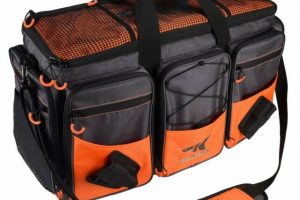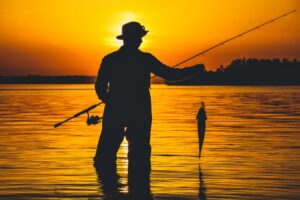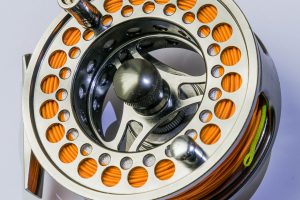
The grouper is an extremely popular fish when it comes to the dining table. Almost everyone loves nothing more than the refined taste of grouper and that is the reason these big and heavy fish are so high in demand. There are several species of the grouper and while the United States has around a hundred species of the grouper, you will find around 40 different types of them in Florida alone. If you are going to Puerto Rico enjoy some delicious grouper pinchos, especially the grouper ones are so freaking delicious.
So now that you have decided to go fishing for a grouper and are excited to catch a big, fat one, but need help with catching them, then this article is here to help you out with this problem.
A. Bottom fishing for groupers
The anchor should be dropped in upstream
One point to remember is that if the water is deeper, you have higher chances of catching a grouper. Bottom fishing involves you going offshore with your boat and locating an area where there are natural or man-made structures like rocks or ledges.
Drop a buoy and then wait for a few minutes for your boat to move around in the water. You do this to determine the current of the water. Motor back and then drop the anchor around 150 feet up-current. The current determination is important as the grouper will swim on the current and naturally come to you. Moreover, to catch a really good grouper, be prepared to head out into the sea 30 to 85 miles.
Dropping the chum
To catch a good grouper and to do it easily, you must drop chum to the bottom of the ocean as that attracts the grouper. A chum block specially made for groupers can be obtained from the fishing store or you could make one yourself by using sardines and menhaden oil as the base for your chum. If you’d like you could also talk to the owner of a fishing store and ask him about what would be the best chum for a grouper.
Use live bait to your advantage:
Using a live bait is an excellent way to catch a good grouper if you are near the reef as it does an amazing job at getting the attention of it. Take your bait and attach the hook in several locations like its nostrils and throat. Moreover, placing the hook in the throat of the bait is very helpful in bottom fishing.
Throw your line into the ocean
For this, you will have to attach a weight so that your bait reaches the bottom of the ocean where the groupers accumulate. In the case of live bait, it’s movements will bring the groupers close by towards your bait, making it slightly easier for you to catch one. A slight tug will generally mean that the live bait is either trying to get away or it could be a bite as well. In case you think that your live bait is making a dash towards the rocks, just reel down and slightly raise your rod to keep it away from the rocks. Also, remember to regularly check up on your bait to ensure that it doesn’t get off the hook as that is the last thing you’d like at this stage.
Ensure your bait is suspended off the floor of the ocean
While catching a grouper, you must ensure that weight doesn’t bounce off the ocean floor. For this, remember to crank up your reel a few times and then lift your rod so that the leader is straightened out. Once you have done that, you will slowly bring your pole down just so that the bait sits at the bottom.
Now wait for the grouper to bite
When you’re fishing for a grouper, you need lots and lots of patience. It is not possible that all areas will have numerous groupers and very frequently it will be the fish at the bottom taking up your bait.
A few points to remember:
l At this stage, a grouper will try and run away to its natural habitat and this might tangle up your line.
l Place your rod on the rail of the boat so that you get the stability that is needed to pull up a heavy fish like a grouper.
l If the grouper has dragged your line towards the reefs or the rocks, wait patiently for it to come out before you reel it in one more time.
l Unfortunately, you will have to cut your line if your line has gotten tangled up on the reefs or the rocks.
l Be vigilant while you fish as the grouper is a heavy fish and can sometimes take you by surprise.
B. Trolling for grouper:
Go to a suitable part of the ocean
Look for a place where you have higher chances of locating a grouper. Groupers can generally be found near coral or man-made reefs and underwater cliffs. When you go trolling for groupers, do so off the rocks to prevent the snagging of the line. Trolling near the sandy or rocky areas is a good option where you have higher chances of catching groupers. Generally, if you have waited for a while, say about thirty minutes and you haven’t felt a tug then it is time to change the location.
A steady pace is important:
Your boat should move at a speed of around 3-7 knots and the steady speed must be maintained. Moreover, in the case of live baits, the speed should be low. To avoid your bait from getting dislodged from your line, ensure that the speed of the boat does not go beyond 12 knots.
Drop your bait into the water now:
As you do this, leave slack on the line because as the boat moves, the line will straighten up. The bait must reach the bottom of the ocean and bump, sometimes, on the floor. While trolling for grouper, you can use an artificial as well as a live bait. In the case of the latter, keep checking your line to make sure it doesn’t get dislodged.
Patience is the key, again:
Now, just lock your reel and wait for a bite. As soon as you feel a bite, reel with power and be quick and raise your rod. If you have hooked in a big fish like a grouper, the tip of your rod will clearly bend. It is the momentum of the boat that will pull the grouper out of the rocks if it is trying to escape.
Bottom line:
We know how much you all love a good grouper for dinner and if you deny yourself such an amazing feast simply because you don’t have a proper answer to the question ‘how to fish for a grouper?’, it would be a pity. Well, we hope this article solves all your problems.
So now, go ahead, catch a big, good grouper and show off your fishing skills to the rest of the world!












Pingback: Best 5 Grouper Reels Review and Buying Guide | Reel Fishing Guru
Pingback: Best Three Grouper Lures | Reel Fishing Guru
Pingback: Grouper Recipes | Reel Fishing Guru
Pingback: Why do Groupers Eyes Pop Out? | Reel Fishing Guru
Pingback: What Grouper Can You Keep When Fishing in Florida? | Reel Fishing Guru